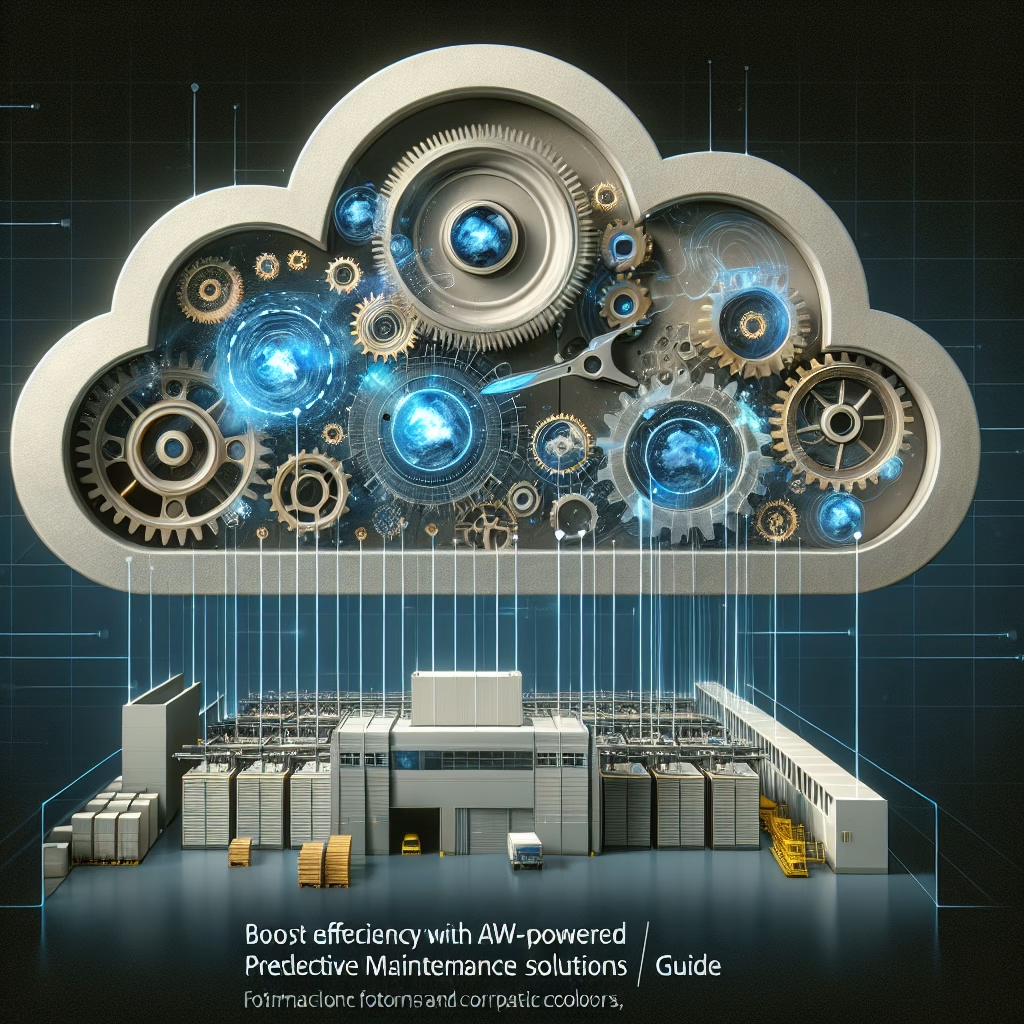AWS AI for Predictive Maintenance Solutions
Summary:
AWS AI for predictive maintenance solutions leverages machine learning and IoT data analytics to anticipate equipment failures before they occur, minimizing downtime and reducing operational costs. Amazon Web Services (AWS) offers a suite of AI tools, including Amazon SageMaker, Amazon Lookout for Equipment, and AWS IoT services, enabling businesses to deploy scalable predictive maintenance solutions. This approach is invaluable for industries reliant on machinery, such as manufacturing, energy, and logistics. By implementing AWS AI-driven predictive maintenance, organizations gain a competitive edge, optimize asset performance, and improve overall efficiency.
What This Means for You:
- Cost savings through proactive maintenance: Traditional maintenance often leads to unexpected breakdowns, increasing repair costs and lost productivity. AWS AI helps detect early signs of wear, allowing timely repairs before catastrophic failures.
- Actionable advice to start small: Begin by integrating AWS IoT Core with basic sensor data streams. Use Amazon Lookout for Equipment for anomaly detection without requiring deep AI expertise.
- Improved asset lifespan: AWS AI models analyze historical and real-time data to optimize maintenance schedules. Implement gradual scaling from critical machinery to entire production lines.
- Future outlook or warning: While AWS AI for predictive maintenance is powerful, failure to properly calibrate models with domain-specific data can lead to false alarms. Integration challenges may arise when merging legacy systems with modern AI tools.
AWS AI for Predictive Maintenance Solutions
Understanding AWS AI Tools for Predictive Maintenance
AWS provides a comprehensive suite of AI and machine learning services tailored for predictive maintenance. Key offerings include:
- Amazon SageMaker: A fully managed service for building, training, and deploying ML models.
- Amazon Lookout for Equipment: A specialized service using pre-trained ML models to detect abnormal equipment behavior.
- AWS IoT Core: Facilitates seamless connectivity between industrial sensors and cloud-based AI models.
- Amazon Monitron: An end-to-end system combining hardware sensors with predictive analytics.
Best Use Cases for AWS AI Predictive Maintenance
Industries that benefit most from AWS AI predictive maintenance solutions include:
- Manufacturing: Detecting anomalies in robotic arms, conveyor belts, and CNC machines.
- Energy Sector: Preventing failures in wind turbines, oil rigs, and power grids.
- Transportation: Monitoring fleet vehicles and railway systems.
Strengths of AWS AI Predictive Maintenance
- Scalable infrastructure accommodating thousands of IoT devices.
- Pre-built ML models reducing implementation time.
- Integration with existing AWS services like Lambda and DynamoDB.
Limitations and Considerations
- Requires clean, labeled data for effective model training.
- Data latency may affect real-time predictions in some cases.
- Partial dependence on third-party sensor manufacturers.
Implementation Steps
- Assess critical equipment needing monitoring.
- Install IoT sensors capturing vibration, temperature, pressure.
- Ingest sensor data into AWS IoT Core.
- Train models using historical failure data.
- Deploy predictive alerts via Amazon SNS.
People Also Ask About:
- How accurate is AWS AI for predictive maintenance? Accuracy depends on data quality but typically ranges 85-95% for well-configured models in structured industrial environments.
- What types of equipment can benefit? Rotating machinery, electrical systems, and any equipment with measurable operational parameters.
- Is coding knowledge required? Basic implementations can use no-code tools like Monitron, while advanced customizations require Python/SageMaker expertise.
- How does AWS compare to other cloud AI services? AWS offers tighter IoT integration versus competitors, but may trail in some industry-specific template models.
Expert Opinion:
Early adopters of AWS predictive maintenance solutions are seeing significant reductions in unplanned downtime, sometimes by 40% or more. However, organizations should budget for both the cloud service costs and sensor infrastructure upgrades needed to feed quality data. The most successful implementations combine domain expertise in the target equipment with data science best practices in model retraining schedules.
Extra Information:
- Amazon Lookout for Equipment Documentation: Official guide detailing model capabilities and integration patterns.
- Siemens Predictive Maintenance Case Study: Real-world example of industrial predictive maintenance at scale.
Related Key Terms:
- AWS IoT predictive maintenance for manufacturing plants
- Amazon SageMaker machine learning for equipment failure prediction
- Cloud-based predictive maintenance solutions USA
- Best AI tools for industrial asset monitoring
- Cost of implementing AWS AI for preventative maintenance
Check out our AI Model Comparison Tool here: AI Model Comparison Tool
*Featured image generated by Dall-E 3





